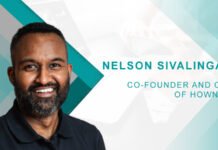John, could you share a brief overview of your journey in the staffing industry and the key experiences that have shaped your expertise?
I worked as a temporary before eventually joining the staffing industry in the most junior role of office administrator, so I’ve experienced the industry from top to bottom. I’ve seen the positive impact that it can make on people’s lives and their families – especially those who have struggled to find work and been able to get a foot on the career ladder through a temporary position.
The staffing industry is dynamic and in a constant state of evolution. There’s always a new trend, a new threat and something new to try to understand. It covers all segments of industry and touches on all aspects of commerce so a career in staffing has provided me with a very broad business knowledge encompassing, macro-economics, technology and labor market trends.
Within my current role, managing SIA’s global research team, I’ve been fortunate enough to see how our research has had a direct influence on the staffing industry and how our subscribers have made transformational strategic choices based on the insights we have provided to them.
You have played an integral role in key initiatives such as the creation of HR-XML and the development of global staffing data standards. How do these initiatives impact the future of the staffing industry in terms of technology and data integration?
At the time, the HR-XML Staffing Industry Data Exchange Standards (SIDES) project was very important as it helped to create common data standards across the workforce ecosystem helping employers, staffing firms and other intermediaries to exchange data across multiple systems. By adopting a common language for HR data (e.g., for resumes, job postings, timecards, and employee records), systems from different vendors could seamlessly communicate. This allowed staffing firms, job boards, payroll systems, and applicant tracking systems to work together more efficiently.
It meant that matches between candidates and job openings could be processed more quickly, enabled HR teams to better automate processes, reduced costs across the entire ecosystem and fostered innovation and collaboration by allowing new tools and platforms to enter the market without major integration barriers.
It was the first time that the world’s largest staffing firms had collaborated on such an initiative and remains the historical foundation for the modern exchange of HR data. I am very proud to have brought this collaboration together and been actively involved in such an impactful project.
How does the current economic trend of a ‘Lazy W’ recession impact staffing firms, and what strategies should they adopt to remain resilient during this prolonged recovery?
Staffing growth is very closely correlated to GDP and staffing firms are very experienced in dealing with a ‘bumpy’ economy. They’ll maximize profits in the good times and implement cost savings, normally through natural staff attrition, in the bad times. Having said that, the ‘Lazy W’ presents a particular challenge. A slow, drawn out recovery like this is somewhat unusual and staffing firms will have to ensure their reduction in revenue is closely correlated to their reductions in cost. The good news is that there are new opportunities to save cost. Recent advances in AI, and more recently, agentic AI are providing staffing firms with many opportunities to automate and operate more efficiently.
While some staffing segments, like healthcare, remain difficult we are anticipating some growth to return in other segments this year. The bonus for those that successfully manage their way through the slow recovery is a market cleaned out of poorly performing competitors and a bigger market share.
As AI is becoming quite ubiquitous throughout the entire staffing organization, what do you believe are the key opportunities for AI to improve efficiency beyond just talent acquisition?
Staffing firms can harness AI throughout their organization so the potential benefits are extensive. Every department can enhance processes through the use of artificial intelligence either by making them quicker, less expensive, more accurate, less biased or more informative – and, maybe all of these in combination.
To highlight a couple of key opportunities, AI-driven performance dashboards can improve the administrative role of the busy staffing executive by adding depth to company analysis, making it easier to identify market trends, interpret benchmarks, and even forecast future results. More mundane tasks such as compliance monitoring can also be automated providing staffing executives with more time to focus on strategic development and interpersonal tasks. When AI is widely available to support the managerial process, managers have more time to spend being human.
For sales and business development, we have seen the emergence of many new technologies to enhance interactions with customers, chatbots being perhaps the most visible. But it does not stop there. Advanced customer relationship management tools now include AI-powered lead scoring and account optimization through the identification of patterns in customer behavior. This enables sales and business development teams to personalize interactions, optimize pathways, and better anticipate customer needs. AI can also be used to optimize pricing models in a variety of ways, including the adjustment of prices in real time, the automation of routine pricing tasks, personalized pricing strategies and promotional campaign targeting.
With the growth of agentic AI and virtual employees, how do you think this will impact the demand for traditional staffing services like direct hire and temporary staffing?
Agentic AI is the realization of the long-predicted disruption to the labor market caused by artificial intelligence and makes that realization much more imminent.
The future is here! All organizations are faced with the challenge of deciding whether tasks are best handled by artificial intelligence or human intelligence – or a combination of both.
While some jobs will be lost, the general consensus at the moment is that most jobs will be changed by AI rather than eliminated and that, on balance, more jobs will be created. There’s a fundamental restructuring of the labor market underway and staffing firms are in an advantageous position to benefit from this trend by supporting their clients through a complex transition. The more chaotic the labor market is, the more employers will need support from expert intermediaries.
With increasing regulations on AI in 2025, how can staffing firms ensure compliance with evolving laws and avoid potential legal risks or penalties?
Given staffing firms are heavily reliant on third-party software, without proper due diligence, they are particularly exposed to AI risk. Staffing firms are well advised to monitor and audit any AI software regularly in order to to detect and correct any bias or errors using professional algorithm auditors where appropriate. Such audits can help to provide assurance that algorithms are legal, ethical and safe via robust and independent evaluation.
While there is no federal legislation in the US regulating AI, various states are developing consumer privacy regulation incorporating restrictions on the use of AI. In other countries, legislation is being developed or, in the case of the EU’s AI Act, already started to come into force.
In an age of misinformation, fake content and AI hallucination, make your business decisions based on objective and verifiable data from trusted sources.
What are the ways in which staffing firms manage the complexities of varying legal requirements, especially in an increasingly polarized political climate?
It’s a particular challenge, especially for those firms operating across multiple states. The US is 50 systems of jurisprudence with a complex interplay and hierarchy between federal and local laws where state/municipal laws can be either superior or subordinate to federal law, depending on the issue at hand.
As public opinion becomes increasingly divisive on many issues, it seems inevitable that differences in state law will become equally polarized. Unfortunately, for many staffing firms this is simply the cost of doing business and there is little alternative but to ensure you keep on top of the evolving regulatory landscape through increased internal or external legal support.
As staffing firms become more reliant on third-party technologies for candidate sourcing, what strategies can they use to protect their competitive advantage and data security?
Differentiation is one of the key challenges for staffing firms. Despite all the effort and investment they make in creating a unique corporate culture, employers and jobseekers know that they are essentially selling the same product (people) at similar prices, using similar processes and similar technology as their competitors.
There are, however, two key ways to protect competitive advantage. Firstly, with regards to technology, it comes down to the way that staffing firms create and harness the entire tech stack and all the complex integrations that are required to effectively integrate multiple software products. Secondly, staffing remains a people business and the staffing firms that will be the most successful are those that are able to maintain and develop their own skilled workforce, and who can be trusted and add value to client and candidate relationships.
What are the benefits and risks of offering outsourced solutions, and how can staffing firms scale these services successfully for better margins and deeper client relationships?
Outsourced solutions are an attractive segment for many staffing firms given that, in comparison to temporary staffing provision, outsourcing can provide better pricing and margins, longer-term contracts and access to more senior decision-makers within organizations and deeper client engagement.
There are multiple ways that organizations can choose to get work done and it’s not surprising that, in addition to providing temporary solutions and direct hire, staffing firms want to take advantage of the large demand for this higher-value solution.
However, outsourcing does come with a different risk profile especially when the solutions provider is taking responsibility for project delivery or outcomes. There is also a danger that work commissioned on a statement of work (SOW) basis may actually be disguised employment and staffing firms with solutions businesses are likely more exposed to this type of risk than traditional, standalone consulting firms.
For many staffing firms, the best way to deal with these risks is to create a standalone outsourcing brand staffed by people with the particular expertise to deliver these consulting projects.
What advice would you offer to staff agencies to future-proof their business and remain at the forefront with the rapid advancements in AI and the rise of virtual employees?
There’s no single answer to this question. Some staffing firms will succeed by taking full advantage of all the benefits that technology can provide. They will be highly digitalized and highly cost-efficient. However, while it’s vital to ensure that staffing firms keep on top of technology trends and the benefits these can bring to their business, smaller staffing firms will still be able to compete successfully by emphasizing the unique human qualities that are embedded in their service delivery.
Future-proofing your business also involves not being over-reliant on a narrow segment of the labor market, one region or one client. A diverse and balanced business portfolio across multiple geographies and with a diverse client mix is a good guarantor of success.
At it’s basic level, success in staffing is simply about finding the right candidate and, if you can do that more quickly and more cost-effectively than your competitors you will succeed.

John Nurthen ,Executive Director, Global Research
Founded in 1989, Staffing Industry Analysts (SIA) is the global advisor on staffing and workforce solutions. Executive Director of Research John Nurthen leads the team that delivers SIA’s international research content. He has over 30 years of experience in the staffing industry, having previously worked in senior managerial roles for three of the world’s largest staffing companies.












